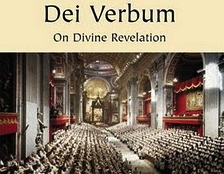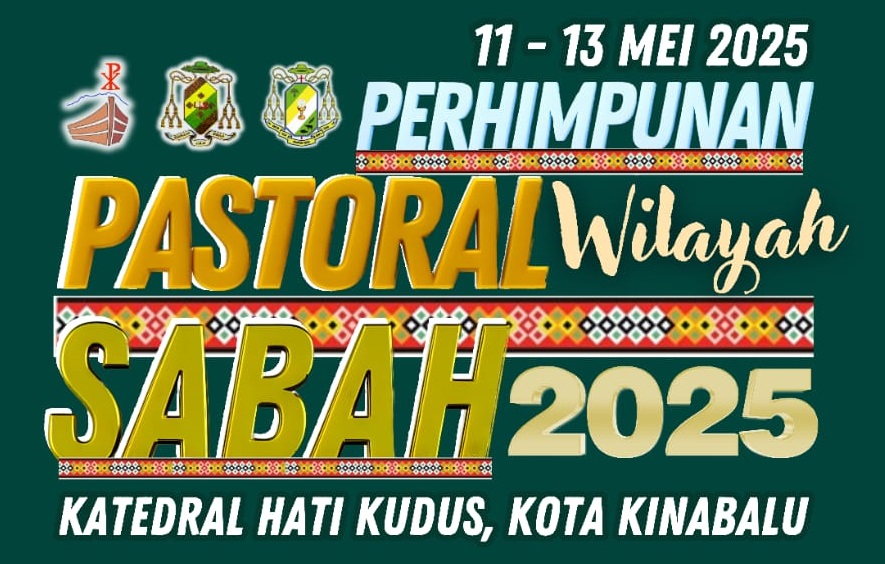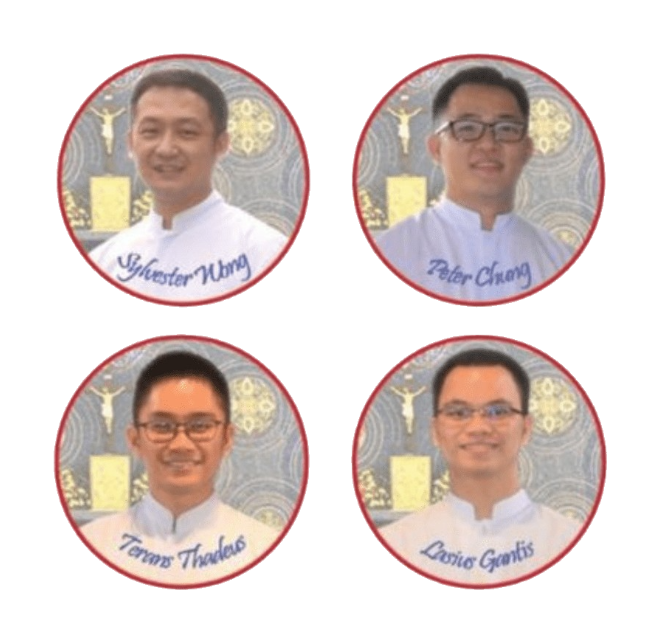The Dogmatic Constitution on Divine Revelation Dei Verbum
 The first constitution to be approved by the Second Vatican Council was the Constitution on the Liturgy, but it is Dei Verbum, the Constitution on Revelation, which reveals most clearly the change in attitude that happened at the Council, because it brought about a change in the way Revelation came to be conceived and taught by the Council. This change in attitude marks all the documents of the Council and gave to the post-Vatican 2 Church a new vision of its mission in the world. It is this change in attitude that remains the great challenge that the Council still presents us with today.
The first constitution to be approved by the Second Vatican Council was the Constitution on the Liturgy, but it is Dei Verbum, the Constitution on Revelation, which reveals most clearly the change in attitude that happened at the Council, because it brought about a change in the way Revelation came to be conceived and taught by the Council. This change in attitude marks all the documents of the Council and gave to the post-Vatican 2 Church a new vision of its mission in the world. It is this change in attitude that remains the great challenge that the Council still presents us with today.
The Constitution, Verbum Dei, speaks of the three guidelines of our Faith: Scripture, Tradition, and the Magisterium and also of the relationship between the three. However, because of historical reasons, right up to the eve of Vatican 2, the impression was given that the source of faith consisted in consulting the Magisterium.
Also, again for historical reasons, Tradition often seemed to be regarded as almost above Scripture, because there were some dogmas of the faith – especially about Mary – that could not be found literally in the Scriptures. The reason for this lop-sided view of revelation came about because of the defensive stance taken by the Church at and after the Council of Trent. The Protestants had argued for “sola scriptura” – namely, that Scripture was the only source of Revelation – and it was on this basis that they condemned certain beliefs in the Catholic Church as false. The Council of Trent defended the Catholic position and, to make its position clear, it presented revelation as a series of truths, proclaimed by the Magisterium and supported by Tradition and Scripture. Thus, the impression was given that the most important aspect of this process was the Magisterium, then came Tradition and lastly came Scripture – as a support for the other two.
A completely new approach
This way of thinking about revelation can clearly be seen underlying the first draft of the Constitution on Revelation, as put forward by the Curia. It stressed that the Church’s Magisterium “manages” the deposit of faith; it maintained that Scripture is literally inspired – in all its aspects; that the Latin version of the Bible, the Vulgate, was the inspired text and that although vernacular versions may be given to believers for their own reading, only the Magisterium could interpret Scripture. This draft was completely rejected by the Council and Pope John ordered that a new commission, with new members, be set up to draft a new constitution.
When the new Schema came to be debated two years later, in September 1964, it was found to have an altogether different focus. It no longer spoke of biblical revelation as a package of intellectual truths, but as an invitation from the God who loves us. Revelation is described as God, in his great love for us, speaking to us as friends and entering into our lives, so as to invite and receive us into fellowship with himself. (Dei Verbum 2)
This was a whole new way of looking at our Faith – Revelation, the Council taught, speaks primarily to the heart, not the head – it is a matter of life and hope, not a matter of understanding truths. Moreover, it goes on to say that this is not a new way of understanding revelation, but that this has always been so, for from the beginning God ‘roused our first parents to hope for salvation by the promise of redemption’.
The approach sees the fullness of this revelation as being in the person of Jesus, not only in his teaching, but in the total reality of his presence, in all he did and said and above all his death, resurrection and ascension. It is a vision that is rooted in prayer – for “faith” is about getting to know the person of Jesus, rather than learning a set of truths. It is not an assent to doctrines – but a profound awareness that God “is speaking to us as friends” and inviting each one of us ‘to freely entrust ourselves to God in friendship and in mission’. This, the Council teaches, is a ‘life-experience’ – and our response can only be a humble act of trust that, like Abraham, we will follow wherever our God leads.
This understanding of Revelation as a “life-giving friendship between God and his People” is the background we need to fully understand, before looking at the particular aspects of Revelation that the Council spoke of.
This understanding overcomes the presumed problem that there are two sources of revelation – Scripture and Tradition – for it is not about consulting different sources, but listening to the God who speaks – however, wherever, whenever he speaks to us. Scripture is part of this total experience of God in Christ but is central to that experience and, as such, is guaranteed by the Church, for it is the record of the experience of the first Christians of that relationship and so helps us hear what God is saying to us now.
The Scriptures, therefore, are not merely sacred texts, static accounts of truths to which everything has to conform; instead, the Council saw them as part of a living relationship between Christ and his Church. They are given to help us understand what God is saying to each of us personally and to us as Church. ‘This tradition which comes from the apostles progresses in the Church under the assistance of the holy Spirit. There is a growth in understanding of what is handed on, both the words and the realities they signify’ (no. 8).
There is, therefore, a development of doctrine, as taught by Cardinal Newman, who was present at the 1st Vatican Council. His position on this was not accepted at that time, but great ideas take time to be fully understood and the understanding of them deepens gradually, as different questions are asked and different angles reflected upon.
The Council Fathers refused to make any further statement about the proportionate contribution of scripture and tradition, holding that theological discussion had not progressed sufficiently far. In other words, our understanding of our Faith is still growing.
Inerrancy
The same approach was used when speaking of whether the Bible contains errors. The Council left the question open, saying only: ‘we must acknowledge that the books of scripture teach firmly, faithfully and without error such truth as God, for the sake of our salvation, wished the biblical text to contain’ (no. 11). This is consistent with the idea that the Holy Spirit speaks through the human author, but this does not mean that everything the human author writes is inspired. Indeed, against the background that Revelation is the self-gift of a person, drawing us into a personal relationship with God the question loses its urgency, for such a self-gift does not occur merely through the communication of truths.
In this way, Vatican II sought to assert what is also agreed among most Christians, and to leave open other questions to further investigation and discussion. This document, then, gives full approval to Bible scholars to search for the truth, something that in pre-Vatican times was only allowed to be done within the limits set by Curia officials.
Use of the Bible
The final chapter of Dei Verbum can be seen as the most important of its six chapters because it sketches out how its teaching and attitude should form our life in the Church.
In pre-Reformation times, most Catholics could not read, but they knew the Bible stories through the pictures and statues that adorned their churches and through the Mystery plays that were a part of most holyday celebrations. However, after the Council of Trent, faced with the opposition of the Protestants, Roman Catholics came to neglect the Bible and concentrated more on doctrine. The Church began to stress those aspects the Protestants neglected, especially the Sacraments and so Scripture tended to be the forgotten truth – except in the liturgy – where the centrality of its position in Church life remained obvious – but it was in a language most people did not know, Latin, and surrounded by laws, which tended to hide it.
As a result, Catholics shied away from the Bible and the use of Scripture in the liturgy became crabbed and narrow. This wariness and neglect of Scripture was a far cry from the statement of Dei Verbum, no 21,
“There is such force and power in the word of God that it stands as the Church’s support and strength, affording her children sturdiness in faith, food for the soul and a pure and unfailing fount of spiritual life”.
It went on to urge theologians to earnestly study the Bible,
“So that ministers of the Word may be able, as widely as possible, to nourish God’s people with the food of the Scriptures, and so produce the effect of enlightening minds, strengthening wills and firing hearts with the love of God.”
Scripture is thus seen as an integral part of all that we do. This had two further consequences:
1. The Council directly encouraged ecumenical collaboration over the Bible and we have seen the result in translations, such as the NRSV, and this has helped remove suspicions between Churches, and led to wider co-operation and mutual understanding among Christians. (Dei Verbum 22)
2. Nor is this to be only an intellectual activity – as Dei Verbum 25 insists: ‘Let it never be forgotten that prayer should accompany the reading of holy Scripture, so that it becomes a dialogue between God and the human reader; for “when we pray, we talk to him: when we read the divine Word, we listen to him” This has made possible the Scripture-based services of public prayer suggested by the Constitution on the Liturgy and which have become the mainstay of Catholic life in our Kampongs throughout East Malaysia.
In conclusion the finale of the document may be quoted: ‘Just as faithful and frequent reception of the Eucharistic Mystery makes the Church’s life grow, so we may hope that its spiritual life will receive a new impulse from increased devotion to the Word of God, which “abides forever”’.




This Post Has 0 Comments